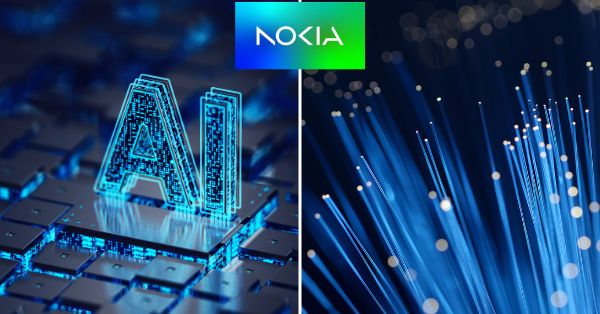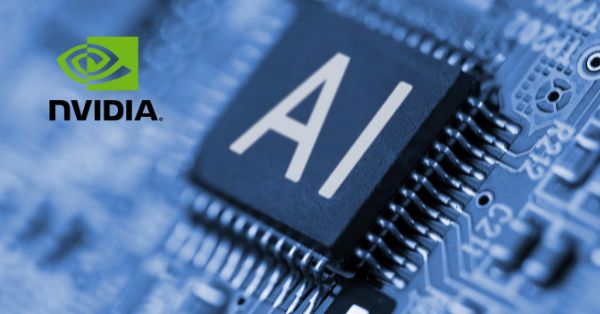Nokia’s $4B US investment in AI‑native networks
Nokia is making a multi‑year, $4 billion push to expand US R&D and manufacturing as it pivots to AI‑native networks under CEO Justin Hotard.
Nokia’s $4B US R&D and manufacturing plan
The company will invest roughly $3.5 billion in US‑based R&D spanning networking technologies, defense applications, automation, quantum‑safe networking, and semiconductor development.
A further $500 million targets manufacturing and R&D expansion in Texas, New Jersey, and Pennsylvania, strengthening domestic supply chains for critical telecom gear.
The plan follows Nokia’s strategy revamp and creation of a Mobile Infrastructure unit to advance an AI‑native network portfolio across RAN, transport, IP, and cloud.
It also builds on the company’s US footprint from the Infinera deal, including a prior $2.3 billion commitment and the optical specialist’s manufacturing facility investments worth hundreds of millions of dollars.
Nokia frames the move as enabling secure, energy‑efficient, AI‑ready networks for operators, cloud providers, the public sector, and large enterprises.
Market and policy drivers for AI‑native networking
AI adoption is re‑architecting traffic patterns, compute placement, and security requirements across national networks.
US policymakers are also pushing for resilient, domestic manufacturing and R&D capacity to support data centers, critical infrastructure, and defense applications.
Together, these forces create a window for vendors with optical, IP, RAN, and cloud‑native depth to consolidate share.
How the spend aligns to Nokia’s AI‑native strategy
Hotard’s streamlined operating model concentrates resources around AI‑native networking, with tighter integration between silicon, software, and systems.
Expect stronger alignment of RAN and transport roadmaps, acceleration of automation and closed‑loop operations, and more US‑based product validation for federal and carrier requirements.
Why AI‑ready US networks matter for operators, cloud, and government
AI workloads are shifting network bottlenecks and elevating sovereignty, security, and energy as first‑order design constraints.
AI workloads are redefining DCI, metro, and IP‑optical networks
Training and inference clusters drive high east‑west traffic and stringent latency, making data center interconnect (DCI), metro aggregation, and IP‑optical convergence strategic.
Coherent pluggables (400ZR/ZR+) and 800G‑class optics are becoming table stakes, while segment routing, slicing, and telemetry‑rich IP fabrics are moving up buying agendas.
In the RAN, 3GPP Release 18/19 features and O‑RAN architectures are opening the door to embedded AI and RIC‑driven xApps/rApps for load balancing, energy savings, and interference management.
US‑based supply chains, zero‑trust, and quantum‑safe security
Domestic R&D and manufacturing mitigate geopolitical risk and align with federal procurement priorities for trusted networks.
Quantum‑safe networking is becoming a planning imperative as agencies and critical industries start post‑quantum crypto migration in line with NIST standardization.
Zero‑trust architectures and supply chain attestation are also moving from guidelines to contract clauses.
Energy efficiency, bits‑per‑watt, and TCO
AI capacity has a heavy power and cooling footprint, pressuring transport and RAN energy budgets.
Vendors that deliver better bits‑per‑watt and automated traffic engineering will have an edge in 2025–2027 capex cycles.
Nokia’s stated focus on efficiency and automation is aimed at these operator pain points.
Product roadmap impacts: optical, IP, RAN, and security
The spend signals faster roadmaps in optical, IP, RAN, and security with tighter US alignment and validation.
Optical/IP upgrades: 400ZR/ZR+, 800G, and IP‑optical convergence
Expect deeper integration of coherent engines and pluggables for 400ZR/ZR+ metro and DCI, with 800G readiness for backbone upgrades.
IP‑optical convergence, SRv6, and high‑fidelity streaming telemetry should see accelerated development for AI traffic engineering and SLA assurance.
The Infinera portfolio adds coherent optics know‑how and US manufacturing depth that can shorten lead times for domestic builds.
AI‑native RAN, O‑RAN, and RIC xApps/rApps
AI‑native RAN features, including energy‑aware scheduling and automated SON, will be prioritized alongside cloud‑RAN and O‑RAN compatibility.
Near‑RT RIC ecosystems will matter as operators test xApps/rApps to contain opex and improve user experience without full hardware swaps.
Private 5G for utilities, campuses, and defense will benefit from US‑hardened gear and service wraps, building on Nokia’s existing enterprise 5G wins.
Zero‑trust and post‑quantum networking for critical sectors
Roadmaps should include PQC‑ready control and data plane options, crypto‑agile key management, and validated zero‑trust patterns across IP/MPLS and 5G core.
This is particularly relevant for federal, defense, and critical infrastructure buyers who face accelerated compliance timelines.
Action plan for AI‑era network strategy and procurement
Use this announcement to accelerate your own AI‑era network planning and vendor due diligence.
Plan transport for 400G today and 800G in 24–36 months
Audit DCI and metro capacity, targeting 400G now and an 800G roadmap within 24–36 months.
Prioritize coherent pluggables, IP‑optical integration, and automation that leverages streaming telemetry and digital twins.
Model power and space impacts early; connect facility upgrades to transport choices.
Data strategy and RIC policies for AI‑driven operations
Develop a data strategy for network AI: normalized telemetry, data quality, and governance across RAN, transport, and core.
For O‑RAN, define a RIC strategy, API policies, and model lifecycle management before scaling xApps/rApps.
Insist on explainability, rollback, and guardrails for closed‑loop automation in production.
Post‑quantum crypto migration and domestic sourcing
Inventory cryptography, set a post‑quantum migration path aligned to NIST timelines, and require crypto‑agility in new procurements.
Evaluate domestic build options and component traceability, especially for public sector and critical infrastructure contracts.
Key risks, milestones, and buying signals
The opportunity is large, but execution, policy, and market timing will shape outcomes.
Execution risks, incentives, and US‑made SKU availability
Scaling US manufacturing and advanced R&D is capital‑ and talent‑intensive; delays or shifts in incentives could slow ramp.
Track facility milestones in Texas, New Jersey, and Pennsylvania and the availability of US‑made SKUs.
O‑RAN, 3GPP, and ETSI progress on network AI and automation
Watch Nokia’s activity in the O‑RAN Alliance, 3GPP, and ETSI groups focused on network AI and automation.
Operator‑validated RIC applications and multi‑vendor interoperability will be leading indicators.
Buying cycles: transport first, private 5G as near‑term revenue
North American RAN spend remains cyclical; transport and DCI may move first as AI data center builds surge.
Private 5G could be a faster path to revenue if energy, security, and integration outcomes are proven.
Bottom line: Nokia’s $4B US outlay is a timely bid to anchor AI‑era networks onshore, and buyers should translate it into concrete roadmap checkpoints and procurement requirements now.








































